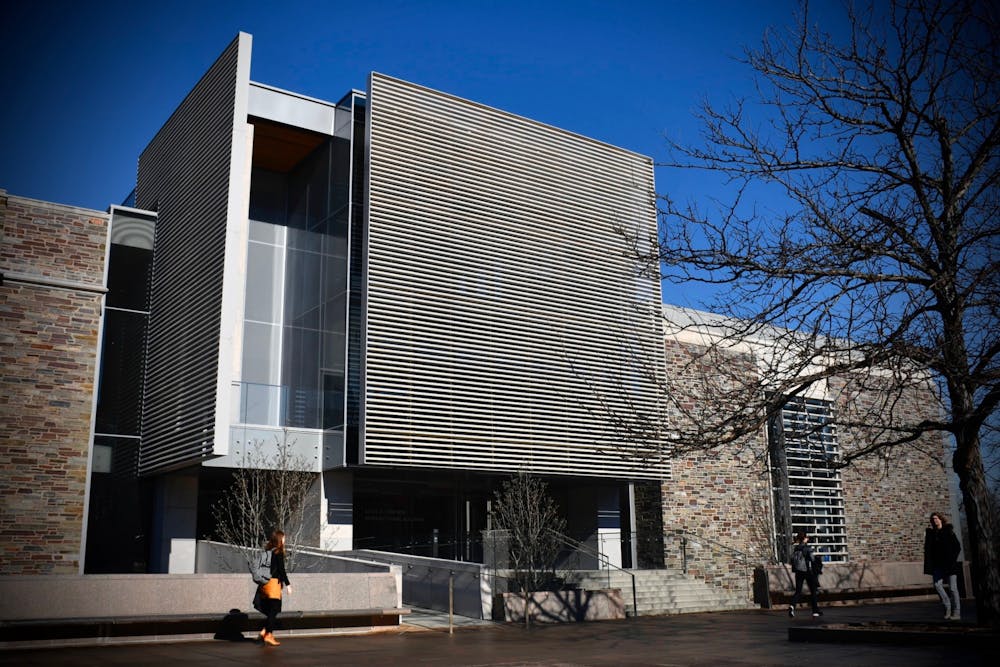The South Asian Studies (SAS) program at Princeton was first established in 2007, making it the youngest area studies program at the University.
Its institution at the University came from much lobbying from students, who felt the need to increase the breadth of Princeton's international curriculum, especially given the East Asian Studies (EAS) certificate dated back to 1927.
Sixteen years later, while the University offers more coursework on South Asia, there are only three core faculty members in the program itself, which students and faculty members have said limits the extent to which the program can expand and offer more courses for students. Out of the eight courses the program offers, six are language classes covering Hindi, Urdu, and Sanskrit.
Mollika Singh ’24, who is pursuing a minor in South Asian Studies, told The Daily Princetonian that the program's slate of languages is overly narrow.
“It really is a shame that the South Asian language offerings here are so limited, and really restricted to these languages that have historically and recently been glorified and elevated. There are no southern Indian languages, for example, or more minoritized languages,” Singh said.
Singh is a former associate Opinion editor for the ‘Prince.’
Nataliya Yanchevskaya, who teaches Sanskrit, wrote in a statement to the 'Prince' that in the past, there have been students “who wanted to take more Sanskrit courses. Because the number of courses I can teach is limited to five registrar-listed courses per year, I have met students’ demand for advanced courses in Sanskrit by teaching multiple reading/individual courses. Usually, almost each semester I have a group of advanced students who participate in such a course.”
“The problem is that, because such courses are not announced via the registrar, I have to make extra effort to publicize them,” she added.

Robert Phillips, who teaches Hindi and Urdu in the SAS program, also wrote to the ‘Prince’: “Given that we three lecturers located within PIIRS have the languages (HIN/URD/SAN) as our primary teaching responsibilities, we aren’t able to offer the same number of concurrent SAS tagged courses as we do for our languages, but our 300-level topics language courses can also apply towards the certificate and the minor.”
Students alluded to the consequences of a smaller department.
Robert Mohan ’26, a prospective Economics major pursuing a minor in South Asian Studies, said that “there’s so many professors who have a great teaching record in South Asian studies, but because their home departments are elsewhere, it leads to a pretty small number of dedicated lectures in South Asian Studies.”
“Recently, a new course became part of the required electives for the minor — Introduction to South Asian Studies. And when that got implemented, all of us were kind of wondering who’s going to teach it, because there's only three lecturers,” Mohan continued. The University has not yet announced who will teach the new class.

Mohan is Design Director for the Business Board of the ‘Prince.’
A number of classes in departments like the School of Public and International Affairs (SPIA) and History are cross-listed in the department and taught by non-affiliated faculty. There are six cross-listed classes this semester. Those courses are determined by there home departments, rather than initiated by the program. Some classes in South Asian studies that don't fit neatly in another department may be currently beyond the capacity of the program.
The EAS Department, which boasts 38 departmental faculty members, has had more time than the SAS program to find its footing. The Department is thus able to provide not only language classes but also, as EAS Chair Anna Shields told the ‘Prince,’ to offer “bigger, more dynamic content courses.”
Shields specifically referenced Professor Brian Steininger's class on Manga and Professor Federico Marcon's course entitled “The Global History of Monsters.”
The establishment of the South Asian Studies department came shortly after the introduction of Hindi to the University as a four-term language sequence, further expanding the subject offerings related to South Asia. Previously, in order to take classes in South Asian-related subjects, students would have had to find other means — for instance, student-initiated language seminars were taken by students at various points to help obtain higher levels of language proficiency.
Today, students and staff emphasize the continued importance of South Asian Studies on campus.
“If you think about where we are in New Jersey and where we are at Princeton, there’s such a large and passionate South Asian undergraduate population who really wants to engage with the languages they grew up around, the cultures they grew up around,” Mohan said.
Yanchevskaya added that the study of South Asia is important to modern day, saying that “learning about ancient and medieval South Asia is crucial for understanding South Asian modernity, international politics, and even certain prominent phenomena of modern Western culture.”
Students have found their experiences with the program to be engaging and valuable, and hope to see more improvement for the future. “All the [cross-listed] classes I have taken for South Asian Studies [have] been so thoroughly engaging and enjoyable,” Mohan said. “If the cross-lists for this program are so great in number and so great in depth and value, then shouldn’t the actual department that they belong to, that their content belongs [to], shouldn’t that be well-funded and well-supported? With SAS right now, the cross-lists are through the roof in excellence, but that home department is lacking in support.”
Christopher Bao is a News contributor for the ‘Prince.’
Sonia Cherian is a News contributor for the ‘Prince.’
Owen Yu is a News contributor for the ‘Prince.’
Please send corrections to corrections[at]dailyprincetonian.com.








